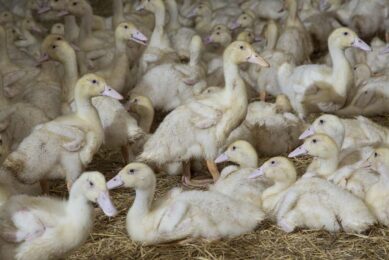Study shows potential of H5N1 AI virus to cause pandemic

One of the largest studies of the highly pathogenic H5N1 virus genetic sequences from poultry and wild birds has found 39 distinct substitutions with the possible ability to increase the pandemic potential of the virus.
Egypt – epicentre of human H5N1 infections
The US-based group looked at 925 viral samples of H5N1 from Egypt collected between 2005-2015. Egypt has been the epicentre of human H5N1 infections, with more confirmed cases than any other country. H5N1 has a high human fatality rate but is not yet well-adapted to human hosts.
Analyses of key substitutions (KS)
Until now, there has never been any spatial analyses of key substitutions (KS) in Egypt. The researchers aligned protein sequences to the viral samples and scanned for KS. They geocoded isolates using dasymetric mapping and then carried out geospatial hot spot analyses to identify spatial clusters of high KS detection rates.
The results found that of the 39 distinct KS detected in the wild, a total of 17 had not previously been reported in Egypt.
KS detected in nearly 95% (874) samples
Detection rates varied by viral protein with most KS observed in the surface hemagglutinin (HA) and neuraminidase (NS1) protein as well as the interior non-structural 1 (NS1) protein. The most frequently detected KS were associated with increased viral binding to mammalian cells and virulence.
Samples with high overall detection rates of KS exhibited statistically significant spatial clustering in 2 governorates in the northwestern Nile Delta, Alexandria and Beheira.
Check out the interactive Poultry Health Tool – with the latest insights on the 40+ most common poultry diseases.
KS possible mechanism for H5N1 to evolve
The research, published in BMC Infectious Diseases, concluded that KS provides a possible mechanism by which avian influenza H5N1 could evolve into a pandemic candidate.
With numerous KS circulating in Egypt, and non-random spatial clustering of KS detection rates, these findings suggest the need for increased surveillance in these areas, say the authors, led by Professor Sean Young, of the Department of Environmental and Occupational Health, University of Arkansas.
Join 31,000+ subscribers
Subscribe to our newsletter to stay updated about all the need-to-know content in the poultry sector, three times a week. Beheer
Beheer








 WP Admin
WP Admin  Bewerk bericht
Bewerk bericht